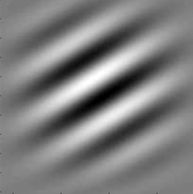Context
Compressive sensing is a recent signal processing approch that enables, under certain conditions ,to reconstruct a complete signal using much less samples as the limit fixed by Shanon theorem. The aim of using compresssive sensing can be either to improve the quality of the reconstructed data using the same amount of information, or to maintain a good quality of data using less information.
3D ultrasound imaging using matrix arrays is an excellent candidate for compressive sensing as it is necessary to reconstruct 3D volumes with the same quality as if the full matrix was used but with a much smaller number of elements. Indeed for technological reasons all element of a matrix array cannot be connected and/or controlled with the current beamformers.
Method
The compressive sensing theory is used here to reconstruct the raw RF signals comming form each element before beamforming. Currently only a feasability study for conventional 2D imaging using linear arrays has been studied.
Two main conditions are needed for the compressive sensing theory to be applyed.
1) There should be a representation basis in which the signal is sparse
2) The representation basis and the sampling basis should be incoherent
We tested three representation basis, namely Fourier, Wavelets and Wave-atoms. The latter has been used in geophysics and seems to be a good candidate to represent oscillatory patterns like the ones in ultrasound RF data.
The incoherence of the bases is achieved by taking a random sampling matrix. The randomness can be full or on a linewise basis. The first strategy leads to better result but is not really close to reality. Indeed as the objective is to work with less elements, it would be randomly selected complete raw RF lines that would be missing from the data set.
Results
We have tested the feasability on simulated data which have been presented in
More recently we have validated the feasability on experimental data from an Ultrasonix MDP scanner. The signals from the 128 elements of a linear array were acquired using a SonixDAQ. The medium under investigation was a general purpose phantom from CIRS. All acquisitions were performed thanks to the Ultrasound Imaging Platform from CREATIS. The raw RF signals were downsampled randomly to imitate compressive sensing acquisitions. Only 80% of the data was used and the complete data was reconstructed using the Wave-Atom basis.
Note that our group has a leader position on the applications of compressed sensing in medical ultrasound. Hervé Liebgott has has given an invited talk on that topic at the 2012 IEEE IUS
Compressive Sensing Ultrasound imaging feasability:
Image from a general purpose phantom reconstructed from the complete original data and corresponding compressive sensing experiment (80% of the data was kept) aswell as error map.

